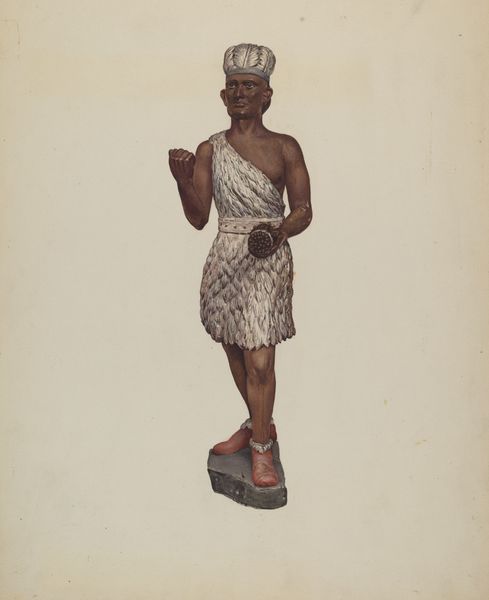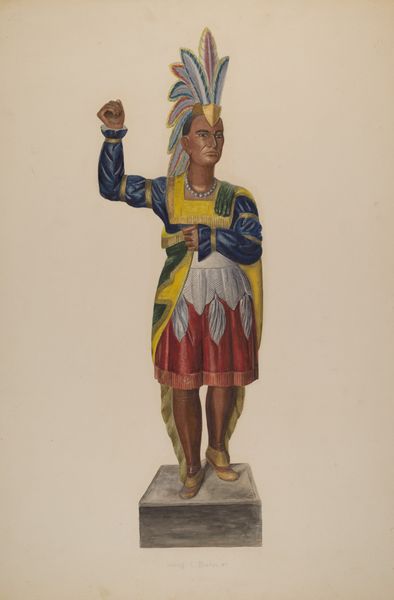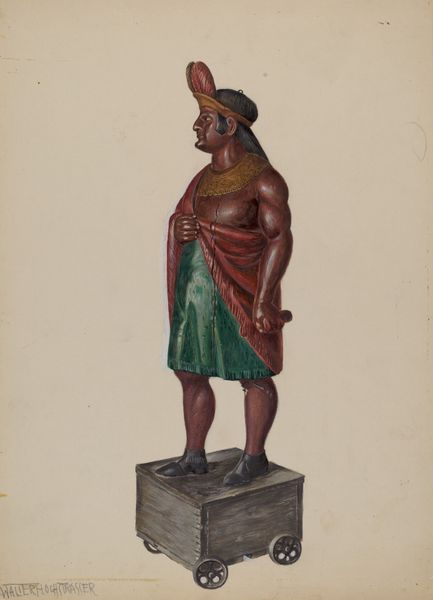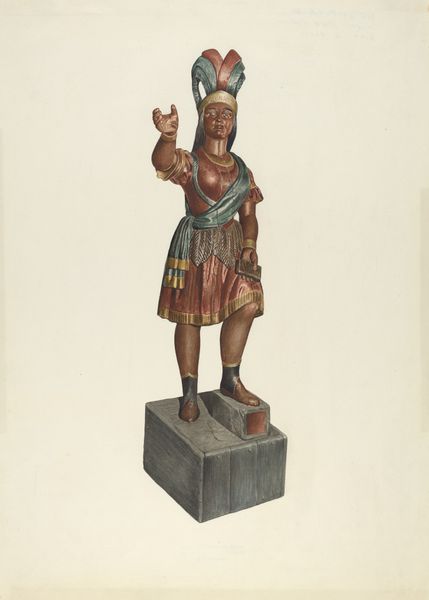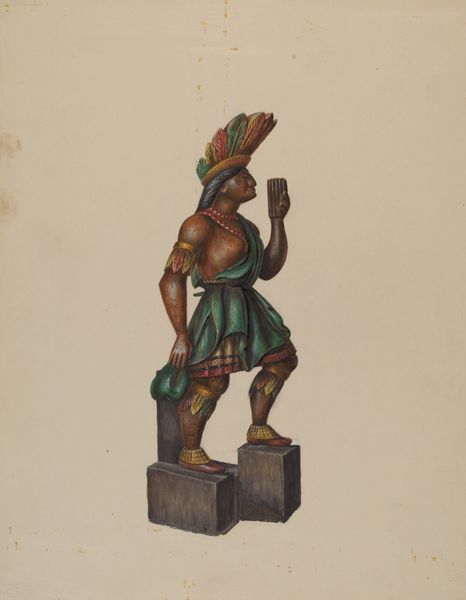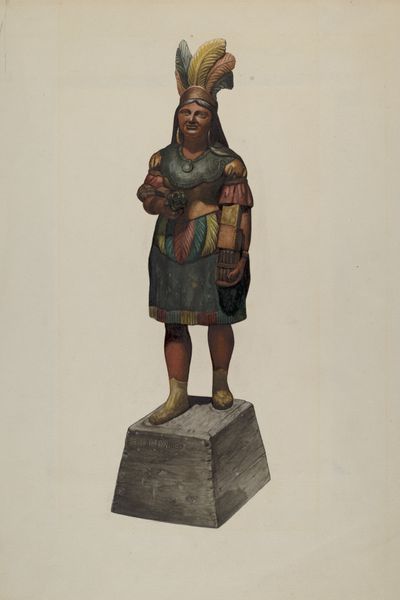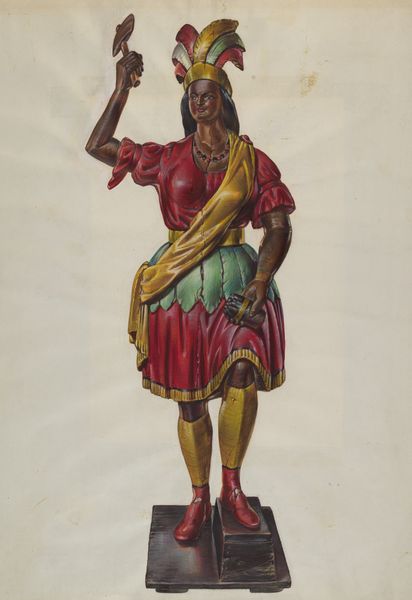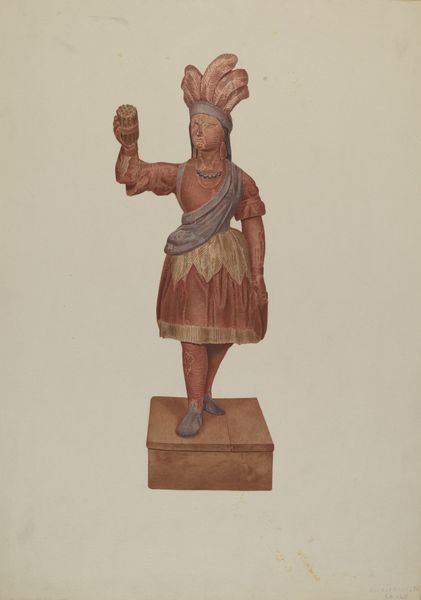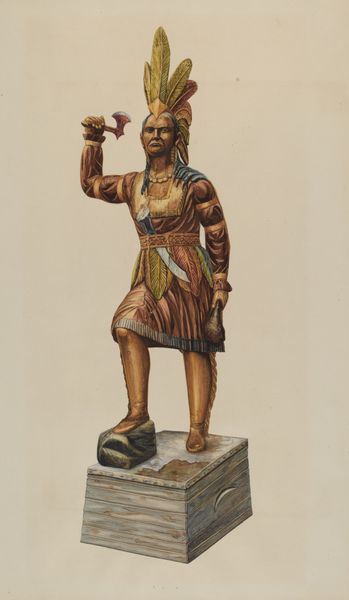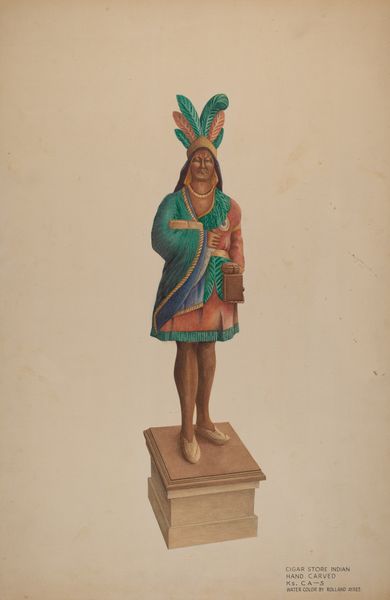
drawing, painting, acrylic-paint
#
portrait
#
drawing
#
painting
#
caricature
#
charcoal drawing
#
acrylic-paint
#
figuration
#
pencil drawing
#
portrait drawing
#
portrait art
#
modernism
#
realism
Dimensions: overall: 34.3 x 24.5 cm (13 1/2 x 9 5/8 in.)
Copyright: National Gallery of Art: CC0 1.0
Curator: Let’s take a look at Eugene Croe’s "Cast Iron Hitching Post," circa 1936, rendered with a combination of drawing and painting techniques. Editor: My immediate impression is one of… ambivalence. There's a forced joviality, perhaps? The figure is elevated on a pedestal, literally cast in a particular light. It feels laden. Curator: Laden indeed. The title directs us to consider function and manufacture, doesn't it? These hitching posts were, often, mass-produced items. Think of the foundries, the labor... iron ore processed, cast into these now-antiquated forms representing something else entirely. What was once a utilitarian object becomes an object for, say, racial commentary? Editor: Exactly! The hitching post is transformed. What do you make of the color palette? The bold blue pants, the single red strap? It feels symbolic in its artifice, almost allegorical. Is the clothing, the costuming, part of the manufactured image, just as the cast iron form is manufactured? The figure even holds some type of hook in its fist. Is this the object the figure is bound to? Curator: It’s curious, isn’t it? That crude clasp held firmly in the right hand? What sort of work was it that bound them together in this way? And consider, too, the context in which Croe created this piece – the mid-1930s, a time of great economic hardship, alongside artistic experimentation, yet entrenched social divides... a very unstable America at the time. Editor: It definitely carries a weight, a somber weight, underneath its exterior that resonates, even now. The history and significance, the cultural baggage carried by that single figure… it makes one think. Curator: Well, this consideration of medium, industry and era really sheds light on the complicated narrative woven into the piece. It encourages an unpacking of historical objecthood. Editor: I think considering both its symbols and its social implications helps us glimpse something deeper and truly troubling about America.
Comments
No comments
Be the first to comment and join the conversation on the ultimate creative platform.

